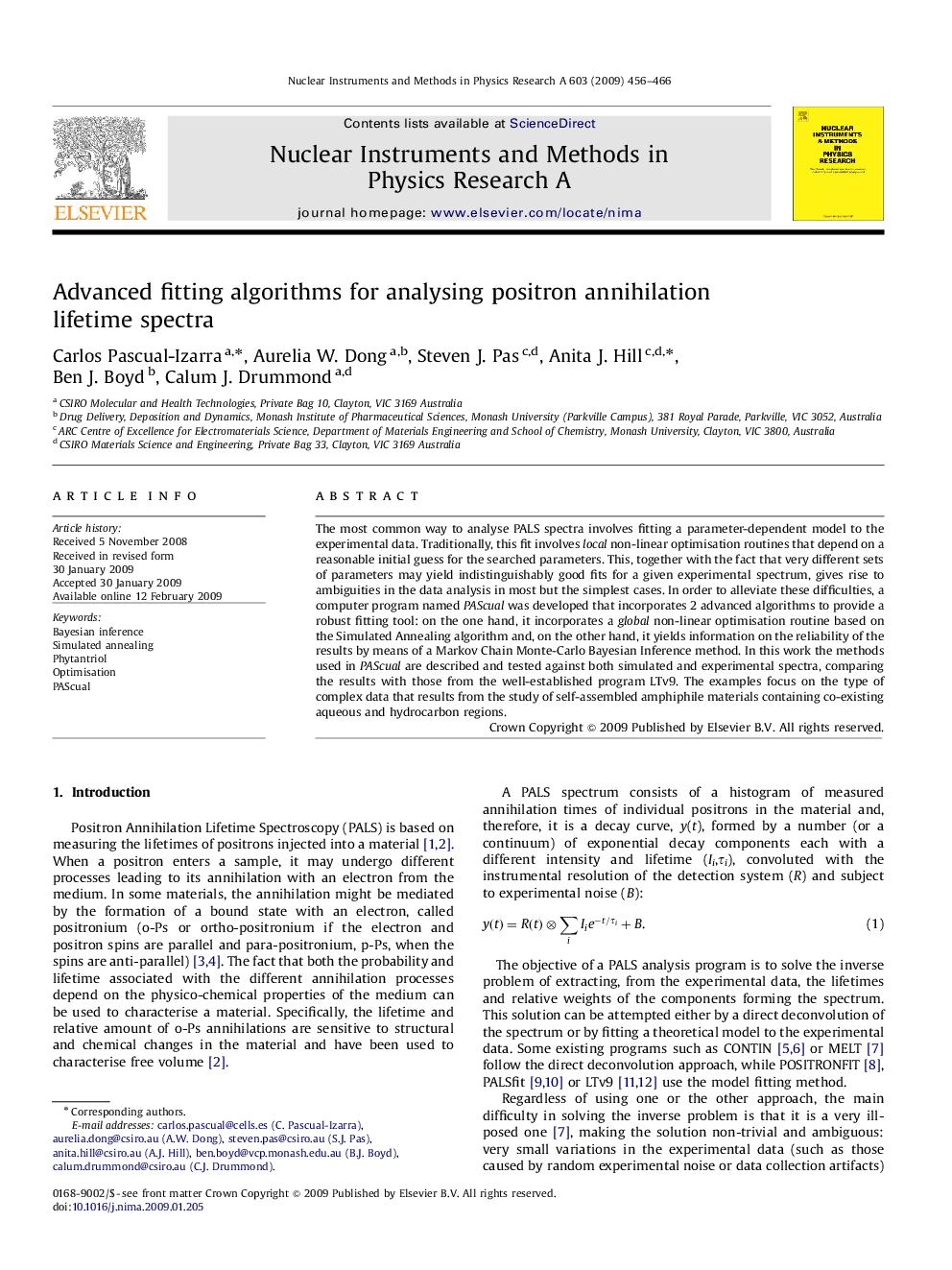| Article ID | Journal | Published Year | Pages | File Type |
|---|---|---|---|---|
| 1828763 | Nuclear Instruments and Methods in Physics Research Section A: Accelerators, Spectrometers, Detectors and Associated Equipment | 2009 | 11 Pages |
The most common way to analyse PALS spectra involves fitting a parameter-dependent model to the experimental data. Traditionally, this fit involves local non-linear optimisation routines that depend on a reasonable initial guess for the searched parameters. This, together with the fact that very different sets of parameters may yield indistinguishably good fits for a given experimental spectrum, gives rise to ambiguities in the data analysis in most but the simplest cases. In order to alleviate these difficulties, a computer program named PAScual was developed that incorporates 2 advanced algorithms to provide a robust fitting tool: on the one hand, it incorporates a global non-linear optimisation routine based on the Simulated Annealing algorithm and, on the other hand, it yields information on the reliability of the results by means of a Markov Chain Monte-Carlo Bayesian Inference method. In this work the methods used in PAScual are described and tested against both simulated and experimental spectra, comparing the results with those from the well-established program LTv9. The examples focus on the type of complex data that results from the study of self-assembled amphiphile materials containing co-existing aqueous and hydrocarbon regions.
